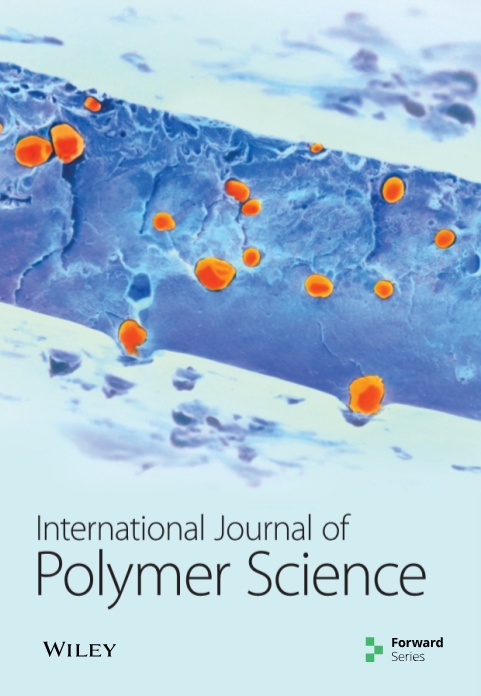Investigation of the Impact of Chemical Modifications on the Photostability of Polymethyl Methacrylate
IF 4.4
4区 化学
Q2 POLYMER SCIENCE
引用次数: 0
Abstract
For practical application, it is crucial to ensure that polymeric materials are protected against degradation due to aging and ultraviolet (UV) irradiation. A range of advancements in developing novel photostabilizers has been made in the last few years. Another approach is the alteration of polymer structures to enhance their ability to resist photodegradation and photooxidation on exposure to UV light for extended periods in harsh conditions. Polymeric chain modifications have proved to be efficient in increasing the photostability of materials. The current work deals with the surface functionalization of polymethyl methacrylate (PMMA) by incorporating organotin moieties on the polymer backbone. PMMA reacts with ethylenediamine to attach amino groups to the polymer chains. The amino group reacts with 2-hydroxynaphthaldehyde to produce the corresponding Schiff base. Adding trisubstituted (methyl, butyl, and phenyl) tin chloride led to the addition of organometallic residence to the polymeric chains. Thin films of the modified PMMA were made and irradiated with ultraviolet light for long durations to test the effect of chain modification on the photostability of polymeric materials. The effect of the substituent on the tin atom on the photostability of PMMA has been analyzed. Various methods were used for assessment, including infrared spectroscopy, weight loss, surface morphology, and roughness factor. The modified polymers showed increased resistance to photodegradation and had lower roughness factor, weight reduction, surface damages, and small fragments generated compared to the blank PMMA. The polymer containing phenyl substituents showed the most apparent photostabilization effect and the least destructive changes in the PMMA surface on photoirradiation.化学改性对聚甲基丙烯酸甲酯光稳定性影响的研究
在实际应用中,确保聚合物材料不会因老化和紫外线(UV)照射而降解至关重要。过去几年中,在开发新型光稳定剂方面取得了一系列进展。另一种方法是改变聚合物结构,以增强其在恶劣条件下长时间暴露于紫外线时抵抗光降解和光氧化的能力。事实证明,聚合物链改性可有效提高材料的光稳定性。目前的研究涉及通过在聚合物骨架上加入有机锡分子对聚甲基丙烯酸甲酯(PMMA)进行表面功能化。PMMA 与乙二胺反应,在聚合物链上附着氨基。氨基与 2-羟基萘醛反应生成相应的希夫碱。加入三取代(甲基、丁基和苯基)氯化锡后,聚合物链上就会加入有机金属居所。制成改性 PMMA 薄膜并用紫外线长时间照射,以测试链改性对聚合物材料光稳定性的影响。分析了锡原子上的取代基对 PMMA 光稳定性的影响。评估采用了多种方法,包括红外光谱、失重、表面形态和粗糙度系数。与空白聚甲基丙烯酸甲酯相比,改性聚合物的抗光降解能力更强,粗糙度系数、重量损失、表面损伤和产生的小碎片也更少。含有苯基取代基的聚合物显示出最明显的光稳定效果,在光照射下 PMMA 表面的破坏性变化最小。
本文章由计算机程序翻译,如有差异,请以英文原文为准。
求助全文
约1分钟内获得全文
求助全文
来源期刊

International Journal of Polymer Science
POLYMER SCIENCE-
CiteScore
6.10
自引率
0.00%
发文量
55
审稿时长
>12 weeks
期刊介绍:
The International Journal of Polymer Science is a peer-reviewed, Open Access journal that publishes original research articles as well as review articles on the chemistry and physics of macromolecules.
 求助内容:
求助内容: 应助结果提醒方式:
应助结果提醒方式:


